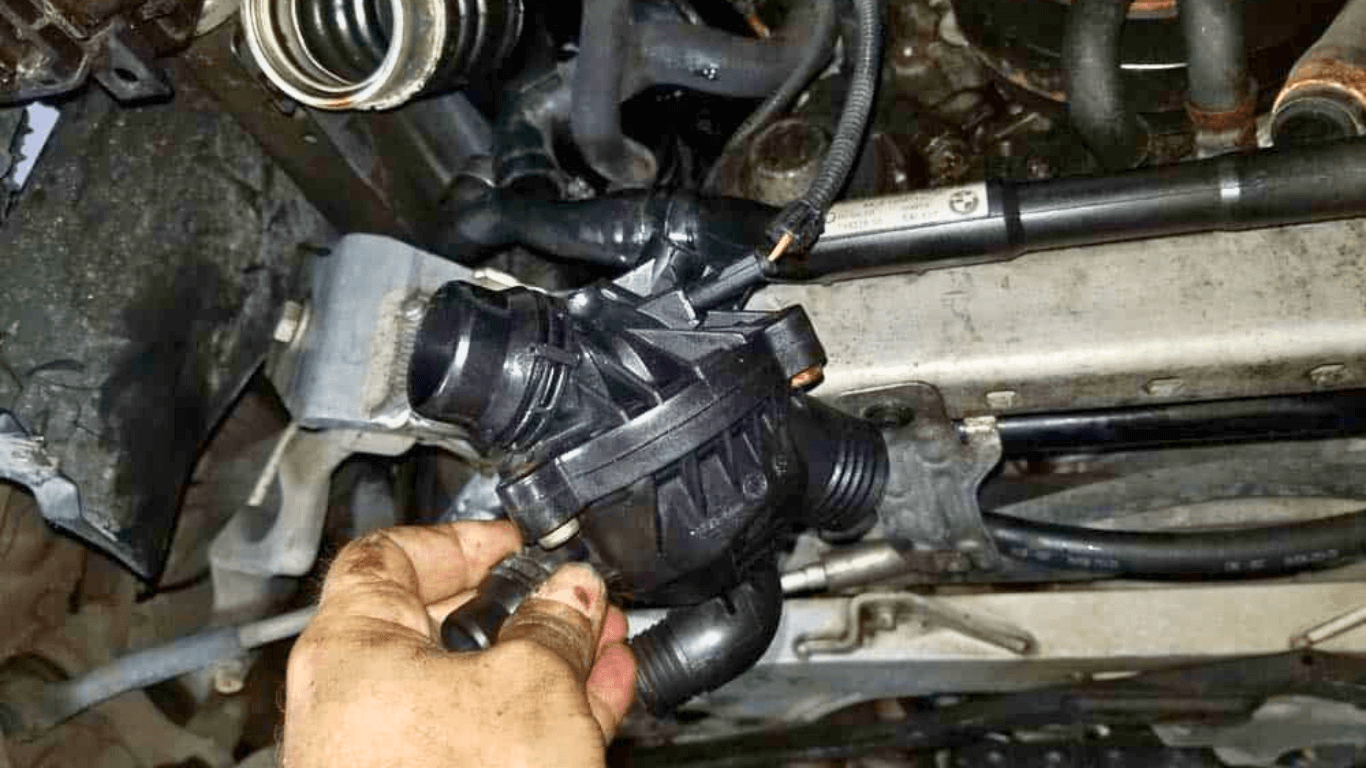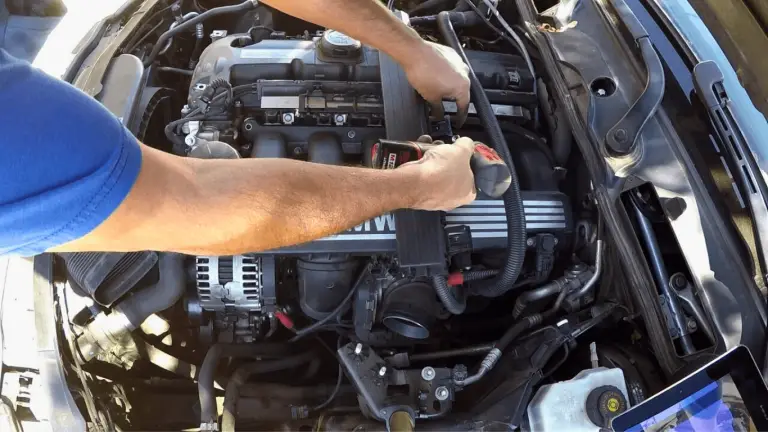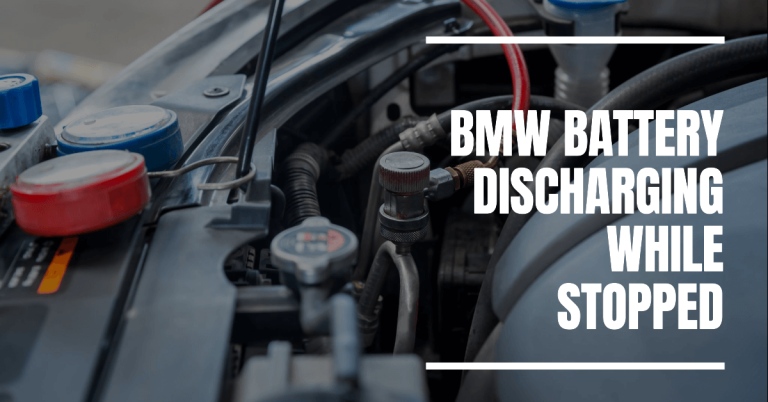BMW Thermostat Replacement Cost: What You Need to Know
Is your BMW starting to overheat or are you noticing the engine temperature fluctuating? One of the most likely culprits is a faulty thermostat that needs replacement. But what’s the typical cost to replace a BMW thermostat and what steps are involved? Read on as we dive into everything you need to know about BMW thermostat replacement.
Replacing your BMW’s thermostat is an important maintenance task that can cost $150-$350 or more depending on the model, parts required, and whether you DIY or go to a shop. While the thermostat itself is an inexpensive part, specialty tools and labor costs can significantly increase the total bill.
In this detailed guide, we’ll cover:
- Common signs your BMW thermostat needs replacement
- Average repair cost range and what impacts it
- DIY feasibility and required tools/skill level
- How long the job takes for shops vs. DIY
- Tips to potentially lower your thermostat replacement costs
- Ideal replacement intervals to avoid future issues
Gaining a better understanding of this common service for BMW owners will help you budget for repairs and make an informed decision on DIY vs. shop repair. Let’s start by understanding why your BMW thermostat needs periodic replacement in the first place.
Why BMW Thermostats Eventually Require Replacement?
The thermostat is a small valve within the engine cooling system that opens and closes to regulate coolant flow and maintain proper operating temperature. It prevents overcooling when the engine is cold but also ensures the engine doesn’t overheat once warmed up.
Some common signs of a failing BMW thermostat include:
- Temperature gauge showing hotter than normal operating temperature
- Significant temperature fluctuations even when warmed up
- Overheating when idling or in traffic
- Hard starting when engine is hot
- Increased heater performance issues
Thermostats are wear items that operate under high temperatures and pressures. Over many years and miles of use, the thermostat valve and spring mechanism wears out. The valve can get stuck open or closed, preventing correct coolant flow and temperature control.
Other than simple wear and tear, contributing factors to thermostat failure in BMWs include:
- High mileage – Thermostats typically last 60-100k miles before replacement is required. The higher the mileage, the more likely it is to fail.
- Age – As with all rubber and plastic components under the hood, the materials comprising the thermostat deteriorate over time. Thermostats over 10 years old are prone to failure.
- Overheating issues – Prior overheating incidents can damage the thermostat. It may function initially but fail prematurely.
- Incorrect coolant mixtures – Using the wrong coolant or diluting it too much reduces its effectiveness and accelerates cooling system component deterioration.
While low coolant or other cooling system leaks can cause overheating, a faulty thermostat itself is the most common root cause. Catching thermostat problems early and replacing it prevents further overheating damage down the road.
What Does BMW Thermostat Replacement Typically Cost?
Now that we’ve covered why BMW thermostats require periodic replacement, what should you budget for this repair?
The total thermostat replacement cost typically ranges from $150 up to $350 or more. This includes:
- Thermostat part cost – Aftermarket units range from $25-$60 while OEM thermostats are $80-$120 or higher. More complex electronic thermostats cost more.
- Shop labor – With total repair times of 1-3 hours, BMW specialty shop rates of $100-$150 per hour greatly influence the overall thermostat job cost.
- Special tools – Some BMW models require advanced specialty tools to access the thermostat, adding to the cost.
But what specific factors affect where your BMW thermostat replacement ends up within that typical range?
Key Factors That Impact BMW Thermostat Replacement Cost
While the thermostat itself may be a basic and inexpensive part, replacing it on some BMWs models is quite labor intensive. Several key factors can raise or lower the total replacement cost:
- BMW model – The engine design and location of the thermostat varies greatly among BMW models. This affects the repair difficulty and tools required. Newer BMWs tend to be more complex and costly.
- Shop labor rates – Independent BMW specialists typically charge $100-$150 per hour while general repair shops range from $80-$120 per hour. Dealer rates are highest.
- Thermostat type – Basic wax pellet thermostats are cheapest while electronic thermostats with integrated sensors cost much more. Late model BMWs use the latter.
- Use of specialty tools – Models like the BMW N20 4-cylinder engine absolutely require advanced tools for thermostat access, adding cost.
- Thermostat location – Some thermostats buried deep require substantial disassembly and increased labor time to reach. Others are more easily accessible.
- DIY vs. shop repair – While DIY is possible on some models, paying shop labor rates for 1-3 hours of work adds significantly to the total.
As you can see, the difficulty of the job and rates charged for shop work are primary cost drivers. Let’s look closer at the tools and skills required next.
Does Replacing a BMW Thermostat Require Special Tools?
One of the biggest hurdles of BMW maintenance and repairs is that many jobs require specialty tools and advanced diagnostic equipment not available to the average car owner. Does this apply to thermostat replacement as well?
Some BMW models require advanced specialty tools to gain access to the thermostat housing while others are more DIY-friendly. For example:
- BMW N20/N26 4-Cylinder Engines – The thermostat is deep within the engine and can only be accessed by removing the intake manifold. This absolutely requires the BMW N20 manifold tool kit.
- BMW N55/N63 V8 Engines – Similarly require dropping the intake manifold using specialty tools to reach the thermostat.
- BMW M54 6-Cylinder Engines – Have a more easily reachable thermostat that can be changed with basic hand tools for a DIY approach.
- BMW M52/M50 4 and 6-Cylinders – Also have thermostats accessible without requiring engine disassembly or advanced tools.
In addition to model-specific tools, factors like shop experience and whether you source OEM or aftermarket thermostats impact the specialty tools required:
- Experienced BMW shops – Have the advanced tools needed for each model already in their toolbox, though they’ll charge accordingly.
- Aftermarket thermostats – Tend to be designed for easier installation and may bypass the need for BMW specialty tools even on difficult models. But quality can vary.
Bottom line – tackling a thermostat replacement yourself on complex BMW engines without the proper tools is nearly impossible and not recommended. An experienced indie BMW shop with the right tools is best for DIY-unfriendly models.
Typical Thermostat Replacement Labor Times
Closely related to tools required is the labor time involved for BMW thermostat replacement. This can range significantly by model from as little as 1 hour up to 3 hours of work in challenging cases.
Here are some approximate BMW thermostat replacement labor times:
- BMW N20/N26 4-Cylinder – 2.5-3 hours due to intake manifold removal
- BMW N55/N63 V8 – Also 2.5-3 hours for intake manifold removal
- BMW M54 6-Cylinder – 1-1.5 hours with easy thermostat access
- BMW M52/M50 4/6-Cylinder – Around 1 hour average
- DIY repairs – Add 1-2 hours typically for inexperienced owners tackling it themselves
Keep in mind that anytime other major components like the intake manifold have to come off, the job takes longer. Thermostats positioned deeper within the engine bay also increase labor times since more disassembly is required to access them.
Expect your BMW specialty shop to charge these hourly labor rates:
- BMW dealer – $150-$175 per hour
- Independent BMW shop – $100-$150 per hour
- General repair shop – $80-$120 per hour
The takeaway is that depending on model, thermostat location, and shop rates, total labor fees alone can approach $200-$450+ for this repair. Now let’s examine if DIY replacement is feasible.
Can You Change a BMW Thermostat Yourself?
With the potential for high BMW shop repair bills, is replacing the thermostat something a mechanically inclined owner can tackle themselves? Here are some key considerations:
- Mechanical skill – Experience doing your own maintenance and repairs is certainly helpful for taking this on. But it’s not an easy job for a first-timer.
- Factory service manual – You’ll need the step-by-step directions for your specific model year and engine. Generic instructions won’t suffice given complexity.
- Tools – At a minimum you’ll need standard hand tools. But not having the right specialty tools for more difficult models makes DIY unrealistic.
- Patience and time – Be prepared to spend a full weekend day digging into this. Thermostat access demands substantial disassembly on some BMWs.
- Risk of collateral damage – Messing up expensive surrounding components when disassembling can get costly. Take it slow.
Due to complexity and specialty tools required, attempting to replace the thermostat yourself is only recommended for simpler BMW models and very experienced DIY mechanics. Others are best off having a professional BMW shop tackle replacement.
However if your model is suitable, you can substantially reduce the typical $200-$350+ repair bill through DIY. Just budget ample time and have a factory service manual on hand for guidance.
Tips to Potentially Lower BMW Thermostat Cost
While some BMW thermostat replacement cost factors are fixed, here are some ways you may be able to reduce the total bill:
- Use aftermarket thermostats – OEM versions can be 2-3 times more expensive. Quality aftermarket thermostats start around $25-$30 and may install easier.
- Shop around for quotes – Labor rates and minimum charges vary greatly shop to shop. Get 3-4 quotes from local specialists.
- Ask about tool discounts – Shops that already own the specialty tools required may give a break on labor for not passing on that equipment cost.
- Negotiate on labor time – If quotes seem inflated on labor hours, negotiate to reduce that portion or ask for a lower shop hourly rate.
- Buy your own tools for DIY – If you’ll be doing your own work regularly, specialty tools like the N20 manifold kit can pay for themselves after just 1-2 uses.
- Provide your own parts – Supplying your own aftermarket thermostat can knock 10-20% or more off a shop quote. Just confirm they’ll install customer-provided parts.
Although not always possible, these tips can potentially help you save $50-$100+ off BMW thermostat replacement in some cases. Keep them in mind when researching options and getting repair quotes.
When Should I Replace the Thermostat in My BMW?
To avoid being left stranded from temperature-related issues, follow these BMW thermostat maintenance recommendations:
- Every 60k miles – Consider replacing the thermostat as preventive maintenance around every 60k miles. It’s a relatively inexpensive way to dodge future overheating issues.
- When overheating occurs – Immediately replace the thermostat if your BMW starts to overheat or temperature fluctuates irregularly. Don’t delay to avoid further engine damage.
- Upon thermostat failure – Diagnose any temperature control problems promptly. Have the thermostat tested and replaced if sticking or failure is confirmed.
- At 100k mile major service – If you haven’t been diligent on earlier replacements, be sure to do it by 100k miles at the very latest along with a full cooling system flush.
Don’t wait until your BMW’s temperature problems leave you stranded. Be proactive with thermostat replacement every 60k miles or at first signs of issues. It’s cheap insurance to avoid expensive overheating damage down the road.
Conclusion
Having to replace a faulty BMW thermostat is a fact of ownership as cars rack up the miles. While the repair part itself is relatively affordable in most cases, the required labor time and specialty tools can result in bills approaching $500 at some shops.
Understanding what impacts BMW thermostat replacement costs allows you to budget wisely and weigh your options. Simple models may be DIY-friendly. More complex versions are best left to experienced BMW specialists with the right equipment.
We’ve covered the typical price range, cost variables, parts needed, labor time comparisons, tools required, and tips on potentially reducing your total bill. Armed with this overview, you can now make an informed decision if faced with this common BMW repair. Being proactive on maintenance will help avoid unplanned temperature-related issues down the road.







